Methamphetamine, often referred to as meth, is a dangerous and addictive drug that acts as a stimulant by prompting the brain to release a flood of dopamine, a neurotransmitter that is associated with pleasure. Meth users experience a rush of confidence, motivation, and euphoria that may last for hours.
Understanding Meth
Learn about meth and substance abuse
This initial rush is often followed by a severe physical and emotional crash.
Meth usually appears in either a powder or crystal form, and can be ingested by being smoked, swallowed, snorted, or injected. In the United States, meth is classified as a Schedule II controlled substance, which means that the U.S. Drug Enforcement Agency (DEA) has determined that it has high potential for abuse and that using this drug can lead to severe psychological and physical dependence.
One of the many dangers of meth is the speed with which a person can become addicted. Both tolerance (needing to use greater amounts to experience a consistent high) and dependence (needing more of the drug to prevent the onset of painful withdrawal symptoms) can develop within the first few times that a person uses meth.
Meth’s powerful effects make addiction difficult to overcome without professional assistance. Thankfully, comprehensive treatment programs that feature intensive therapeutic interventions have helped many addicted individuals overcome their dependence on this dangerous drug and resume their pursuit of happier and healthier lives.
Statistics
Meth addiction statistics
According to the annual National Survey on Drug Use and Health (NS-DUH), just over 5% of the U.S. population has tried methamphetamine at least once in their lives. About 450,000 people described themselves as current meth users. The Drug Abuse Warning Network (DAWN) reports that meth use is responsible for more than 75,000 emergency room visits every year.
Globally, the United Nations Office on Drugs and Crime estimates that more than 24 million people abuse meth.
Causes and Risk Factors
Causes and risk factors for meth addiction
Many factors can influence whether or not a person will abuse meth or any other drug. In some cases, genetics play a more significant role; in others, environmental influences are the primary cause. Most often, a combination of genetic and environmental factors are to blame for a person’s use of methamphetamine.
Genetic: People who have a first-degree relative (parent or sibling) who has struggled with a substance use disorder are at increased risk for having a similar problem themselves. The presence of mental illness within close relatives has also been associated with a greater likelihood for substance abuse and addiction. Researchers have identified more than 200 genes that they believe may influence the degree to which a person is susceptible to addiction.
Environmental: Humans are products of both nature (genetics) and nurture (environmental influences). The same is true for substance abuse and addiction. People who grow up in areas where drug use is common are at increased risk for engaging in substance abuse themselves. Living in certain neighborhoods or communities, associating with certain individuals, and being subjected to certain stresses and pressures (especially when one lacks healthy means of dealing with these stresses and pressures) can significantly increase the likelihood that a person will develop a substance use disorder.
Risk Factors:
- Family history of drug abuse
- Family history of mental illness
- Easy access to drugs (especially meth)
- Age (meth use is most common among younger adults)
- Race (meth abuse is most common among white Americans)
- Personal history of mental illness or prior substance abuse
- Socioeconomic status (meth is more common in lower-income communities)
Signs and Symptoms
Signs and symptoms of meth addiction
Methamphetamine abuse and addiction can exact a significant toll on a person’s mental health, and physical well-being, with many symptoms being particularly difficult to hide. That said, no single symptom or set of symptoms will occur in all meth users. The following are among the more common indicators that a person has been abusing methamphetamine.
Behavioral symptoms:
- Withdrawal from social situations or self-isolation
- Risky and otherwise reckless behavior
- Hyperactivity
- Speaking rapidly
- Lying, secretiveness, or other acts of deception
- Stealing money or objects of value (to be sold or traded for drugs)
- Often missing work or other appointments
- Engaging in criminal activity
Physical symptoms:
- Severe dental distress (commonly known as “meth mouth”)
- Blotches, scabs, and other dermatological problems
- Insomnia, often alternating with hypersomnia
- Dramatic weight loss
- Body odor
- Extremely poor personal hygiene
- High blood pressure
- Increased heart rate
- Severe perspiration
Cognitive symptoms:
- Auditory and/or visual hallucinations
- Memory problems
- Poor judgment and reasoning skills
- Paranoia
- Confusion
- Delusions
- Psychosis
Psychosocial symptoms:
- Anger, agitation, and irritability
- Obsession with obtaining and using meth
- Profound mood swings
- Loss of interest in people, events, or issues that were once of great importance
- Prolonged episodes of hyperactivity or mania
- Depression
Co-Occurring Disorders
Meth addiction and co-occurring disorders
Meth addiction is often accompanied by one or more co-occurring disorders. In some cases, the substance abuse may have led to the development of the other issue, while in other cases the co-occurring disorder can be a contributing factor to the meth abuse and addiction:
- Anxiety disorders
- Bipolar disorder
- Attention-deficit/hyperactivity disorder (ADHD)
- Major depressive disorder
- Persistent depressive disorder
- Other substance use disorders
Effects
Effects of meth addiction
It is no overstatement to note that meth abuse can have a devastating impact on virtually all areas of a person’s life. The following are among the many ways that meth abuse can damage a person’s physical, mental, emotional, and social well-being:
- Irreversible cognitive damage
- Increased risk of contracting HIV/AIDS and Hepatitis C
- Destruction of marriage, friendships, and other personal relationships
- Legal problems, including incarceration
- Financial ruin
- Homelessness
- Drastic changes in appearance
- Malnutrition
- Job loss
- Social ostracization
- Death
Withdrawl & Overdose
Effects of meth withdrawal and overdose
Effects of meth withdrawal: Once a person has become addicted to methamphetamine, attempts to stop using the drug will trigger a number of unpleasant side effects, which are known as withdrawal symptoms. The following are among the more common symptoms of meth withdrawal:
- Muscle tics, twitches, and spasms
- Strong drug cravings
- Profound loss of energy
- Anhedonia (inability to experience pleasure)
- Insomnia
- Weight gain
- Depression
- Thoughts of suicide
- Extreme agitation
Effects of meth overdose: Meth abuse can inflict significant (and, in some cases, irreversible) damage to a person’s physical and mental health. This damage can occur as the cumulative result of long-term abuse, or in the aftermath of an overdose. The following signs of meth overdose demand immediate medical attention:
- Respiratory distress
- Cardiac arrest
- Seizure
- Loss of consciousness
- Kidney damage or failure
- Extreme delusions and paranoia
- Severe abdominal pain
- Stroke
- Coma
- Death



